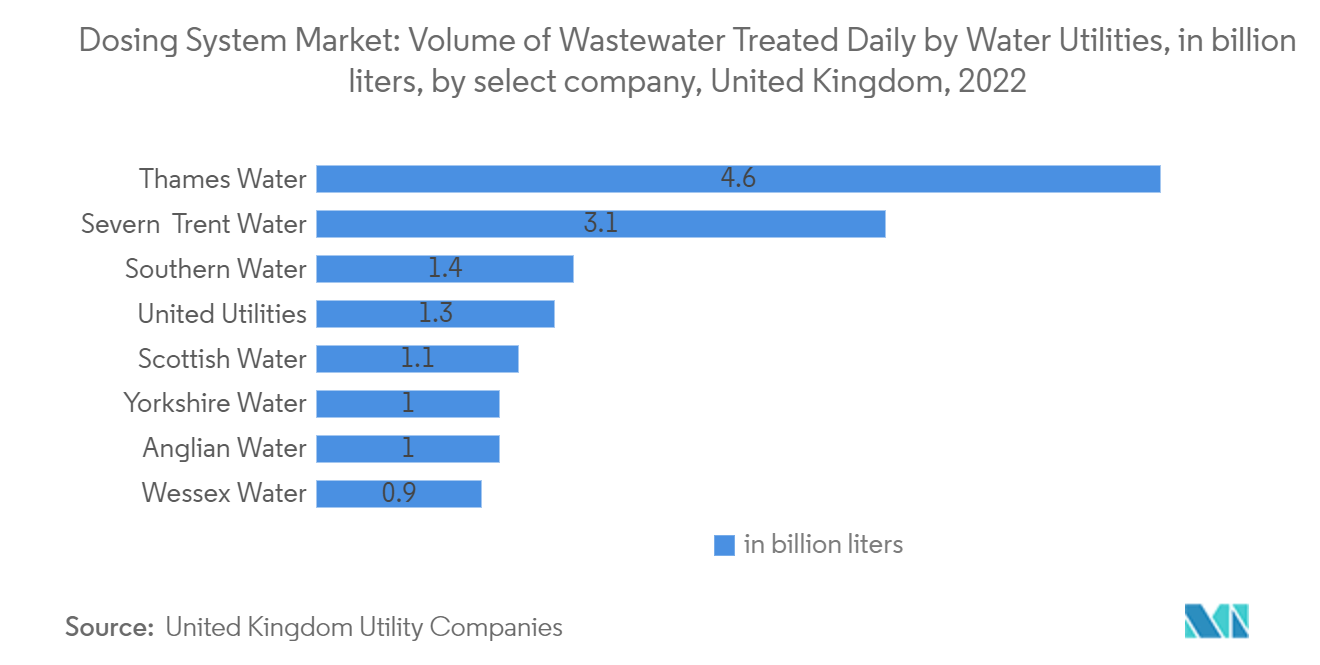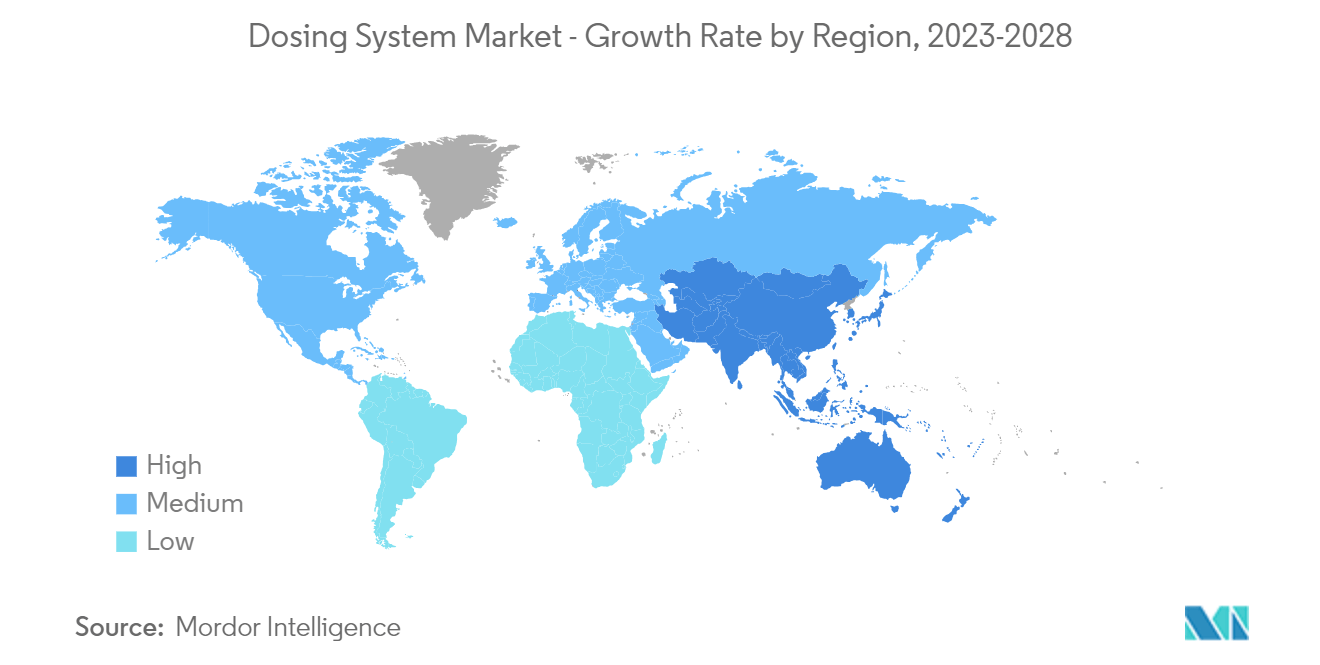Market Trends of Dosing System Industry
Water and Sewage Treatment Sector to Dominate the Market
- A dosing pump is a positive displacement pump that assists in transporting exact flow rates of different fluids and chemicals into another fluid stream.
- Dosing systems are used in water and sewage treatment for multiple purposes. Operations like pH maintenance of boiler water, protection against corrosion, and precipitation are performed using dosing pumps.
- Germany, which has the largest capacity of wastewater in Europe, with 8,891 treatment plants as of January 2022, has an extensive usage of dosage pumps. This, in turn, culminates in the growth of the market.
- Several companies in the United Kingdom treat a billion liters of wastewater on a daily basis. A dosing pump plays a crucial role in injecting a product such as chlorine into a water or fluid stream to cause a chemical reaction. For instance, Thames Water treated 4.6 billion liters of wastewater every day for the year ended March 2022. It also provides 2.5 billion liters of drinking water every day to more than 15 million customers in London and the Thames Valley region.
- In June 2022, water treatment solutions provider Daiki Axis Japan announced the setting up of its second plant in India at Haryana with an investment of USD 25.63 million. The plant, with a capacity to produce 1,000 sewage treatment units with Japanese "Johkasou" technology, is coming up in Palwal, Haryana, India.
- Owing to the above-mentioned points, the water and sewage treatment sector is expected to dominate the dosing system market during the forecast period.

Asia-Pacific to Dominate the Market
- Asia-Pacific is expected to dominate the market for dosing systems, with growth expected in chemical, water treatment, and petrochemicals in the forecast period.
- China and India are the leading markets in the oil refining sectors, with a collective capacity of more than 20,000 thousand barrels per day, holding significant application in dosing pumps.
- Also, wastewater technology is primarily used in municipal wastewater treatment by the municipal authority of various cities across India. As per the World Bank, India, along with China, Indonesia, Nigeria, and the United States, will lead the world's urban population surge by 2050.
- To fulfill the scarcity of water, the Council on Energy, Environment, and Water (CEEW), in association with the 2030 Water Resources Group, has been planning to improve wastewater management in India, along with increasing private investments to build wastewater treatment plants.
- The Delhi government is building India's largest sewage treatment plant (STP) in the Okhla subdivision of Delhi, capable of treating 564 million liters of wastewater per day. It was expected to be completed in 2023.
- In July 2022, Delhi Jal Board (DJB) developed a technology to treat water in its sewage treatment plants. This technology, called ISASMA-CD (Intelligence Self-Administered Self Monitored Automatic Chemical Dosing), has been introduced at four DJB plants at Yamuna Vihar and Okhla with the objective of reducing BOD (Biological Oxygen Demand) and TSS (Total Suspended Solids) to less than 10 PPM (parts per million).
- In Beijing, the government is aiming to invest in wastewater treatment and sewer networks to achieve 100% domestic and industrial wastewater treatment. This is going to increase the demand for dosing systems significantly in the forecast period.
- With the rapid growth in the sewage and water treatment, refining, and food processing industries, Asia-Pacific is expected to dominate the market for dosing systems in the forecast period.


